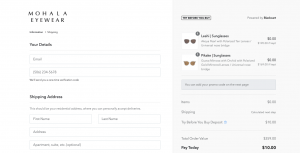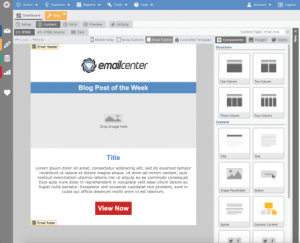 The single most common sentiment I hear from business owners and nonprofit managers about their web sites is that they can’t seem to keep them updated.
The single most common sentiment I hear from business owners and nonprofit managers about their web sites is that they can’t seem to keep them updated.
“It takes too long.” “It’s too hard.” “My content management system doesn’t work right.” “There is nothing to say.” “No one is looking anyway.”
I am here to blow those excuses away. You can keep your web site updated. You can and you must. Sit yourself down, get yourself organized, take a deep breath, and get. it. done.
“It takes too long.”
Here’s what you need to do: get yourself a nice hot cup of coffee. You don’t like coffee? Get a nice chai or a green tea. Get something with some caffeine in it. Maybe a treat, too — cookies are my personal favorite. The point is to give yourself a little reward and motivation to get this work done. Yes, it could take you an hour or more, depending on what you need to update, but lots of things take time to manage — they’re still worthwhile and, more importantly, necessary for the well-being of your business or organization. This is a mindset issue. You do have time for it, just like you have time to balance your books and to follow up with your prospective customers and donors. You make the time because it’s important.
“It’s too hard!”
If it is too hard for you to update your web site, then someone didn’t do his or her job when the site was built. A good web developer who you don’t hire for maintenance will either teach you how to update it or give you some training materials to refer to later — or both. If you don’t know how to update your site, here are some ideas:
- Hire your original developer to train you or build you some training documents. It should have been part of your original contract, but if it wasn’t, throw some money at this problem and get trained. Good, targeted training documents will give you step-by-step instructions about how to do the things you will want to do the most often, whether that’s add a blog, update your photo gallery, create a new donation form, or add items to your portfolio.
- Hire your original developer for maintenance hours. Maybe you really don’t want to update your site yourself. If not, hire someone — your original developer is a good choice if she is available, since she already knows your site well — and give her clear, concise instructions. That will take time, but maybe not as much time as it would take you to figure out a system you’ve found challenging in the past. If I were to hire a developer to do maintenance for me, I’d print out a copy of the pages on my site I wanted changed, attach documents with the new text I wanted added to those pages, and mark up the pages themselves so that the developer could see what I wanted. Then I’d scan those marked-up pages and send them to the developer so that my requirements were crystal clear. For example:

“My content management system doesn’t work right.”
This is sadly all too common. My clients come to me having been sold a content management system far more powerful than they needed, or one that has been hacked and changed so much that online help and support no longer applies to their particular installation. The amount of frustration this creates cannot be overstated. If this is your situation, there are really only two ways out, and they both involve money.
- Hire your original developer to manage your site. If you can still contact your original developer, hire that person to manage your updates as I described under “It’s too hard,” option 2 above. It won’t be your responsibility any more to wrestle with the oddities of the system you’re using.
- Invest in a new content management system. This means a redesign and redevelopment of your site in an easier-to-use system like WordPress, or in an all-in-one tool like Wix or Squarespace. This is a big decision that should not be undertaken lightly, but it will feel fantastic to switch to a system that you have chosen specifically for how well it works for your organization
“There is nothing to say.”
Baloney. Fiddlesticks. Nuh-uh. There is ALWAYS something to say. Do you have a new client? Did you learn something new about your industry? Has the season changed? Are you involved in a new social media network? Have you hired anyone?
I’m not buying this one. You can find something to say.
 “No one is looking anyway.”
“No one is looking anyway.”
Well, there is the conundrum, right? No one is looking at your web site, so you don’t bother adding any content. Anyone who looks a second time sees the same old tired thing, so they don’t suggest it to anyone else, so no one else looks, so you don’t bother adding any content…and the cycle continues. The most common referrers of content to web sites these days are search engines and social media. Both of those referrers are looking for fresh content. If you don’t offer any, you’re not going to get any traffic.
It is a “build it and they will come” situation. You’ll need to train the search engines to link to your site, and you’ll need your customers and potential web site users to expect to see new content. For a while, you won’t get visitors. They’ll start coming slowly. Not updating your site is like having dusty, cobwebbed shop windows and complaining that you never get new customers. Spruce it up a little, put a new product in the window, and window-shoppers might stop in.
We all find excuses not to do the thing we must do, but today, business owners and nonprofits who don’t put the management of their online presence high on their list of priorities will soon find their customers and donors describing them using terms like obsolete, outdated, and behind-the-times. This is a task which has rapidly become a crucial piece of marketing and communication for absolutely everyone. You just have to quit making excuses and get it done.
(248)
Report Post





